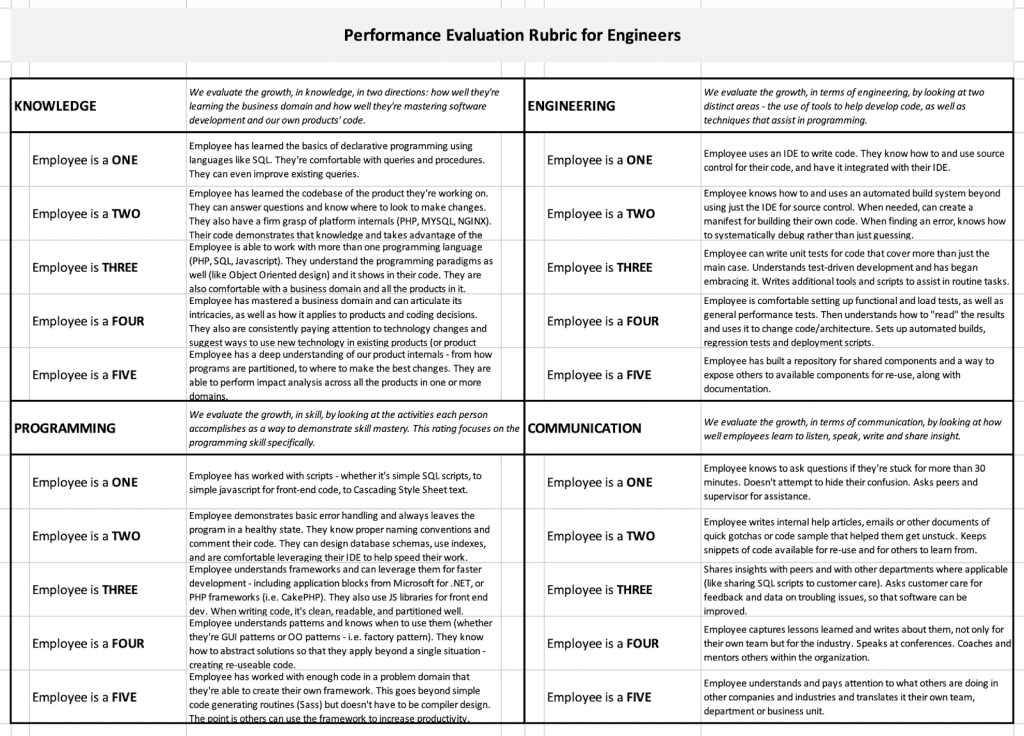
This is a guest post by Chris Lema he’s a long-time friend and partner on building my website and online platform. He is a genius across many fields. You can learn more about him here.
By Chris Lema
I can remember my first job like it was yesterday (and not more than 25 years ago).
They gave me an assignment that they said would take 3 months. I finished it in 2 weeks. What’s next?
Every assignment they gave me took far less time than they estimated and soon I became a key part of the team I was on. I was young but I knew how to use the latest technology to make my job faster and easier.
So it shouldn’t have been surprising to everyone that after six months I wanted to talk about my future. What new roles should I step into? How would I get my salary increased? All that good stuff.
That was when I heard the corporate refrain, “Let’s talk about that at your review.”
In those days we were all told that the way the world worked was to wait until a review to talk about roles, responsibilities and salary.
And more importantly, our expectations were managed that it might take several years to grow into the role we felt we could do right away. Several years!
I don’t know why we didn’t rebel back then. We put up with it. We waited. And because we did it back then, we can easily fall into the trap that people should put up with it now. But it was insane then and it’s still insane now.
- No one wants to wait for a yearly review to get feedback.
- Nobody wants to wait for a yearly review to talk about their current and future role.
- No one wants to wait for a yearly review to talk about their salary.
- And no one wants to wait for a few years to get recognized for their meaningful work
Smart Devices Bring Us Metrics for Everything!
Do you have a FitBit or an Apple Watch? It tells you how many steps you’re taking each day. And the benefit of that isn’t what you see at the end of the day. The benefit comes mid-day when you realize you need to take a few more steps to hit your target.
Have you heard of the Hidrate Spark water bottle? It’s a device that monitors your water consumption. It tells you how many ounces you’ve had in a day – which again, helps you know how much more you need to drink. Best of all? It will sync the data with FitBit so that you can keep all your metrics in one place.
Maybe you’ve heard of Upright. It’s a smart device that tracks your posture and shows you how you’re doing so that you can learn to stand straighter and hold your body in the right way – reducing stress and fatigue. The app collects and displays data so you can make little tweaks, just in time.
What do all these devices have in common? The fact that we get instant feedback. With that feedback, we can make tweaks and changes to what we’re doing. Face it, we’ve all become data nerds in ways no one could have predicted twenty or thirty years ago.
The Three Conversations We Need to Have
When I hire software developers to join my team, I know we need to have three related conversations within the first weeks of their employment.
The first conversation is about growth in their careers.
They will want to know, and need to know, that the trick to progress in their career path is growth. They are the ones responsible for their own skill development. Just like a gym and a trainer, I can show them how to use tools and give them assignments that create learning opportunities, but I can’t lift the weights for them.
The second conversation is about feedback.
I meet with my team daily (for 15 minutes) and weekly (for an hour). They can expect to hear feedback from me immediately. No one has time or wants to wait a whole quarter (or year) to find out they’re doing something that could be improved.
No one has time or wants to wait a whole quarter (or year) to find out they’re doing something that could be improved. Click To TweetThe third conversation is about reflection.
This is the most important conversation we have. It’s where I explain my rubric for assessing their work. More importantly, I give them the rubric so they can assess their own skills and know where they need to improve. It functions like an Apple Watch that tells you in the early evening that you still have some steps to take to meet your goal.
Here’s what that rubric looks like:

These are ladders. We look at knowledge, skills, tools, and communication and in each one, I have clear and binary articulation of what it means to be on that rung. You can see and download the actual worksheet here. But trust me, you’ll need to create your own version.
Employees Want Feedback but Love a Clear Vision
I’ve had those three conversations with hundreds of employees over the last twenty years. And what I have realized is that they appreciate the feedback that comes from daily and weekly huddles. They value it because they never have to worry about how they’re doing. It puts them at ease knowing that I approve of their work (because if I didn’t, they’d hear about it).
But more than the feedback, they absolutely love having a clear sense of what it takes to move to the next level. It’s clear, it’s written down, it’s not ever-changing, it’s not subject to whether our personalities match, and most importantly, they can create their own vision of where they’ll be in the future. Because they’re in charge of it.
